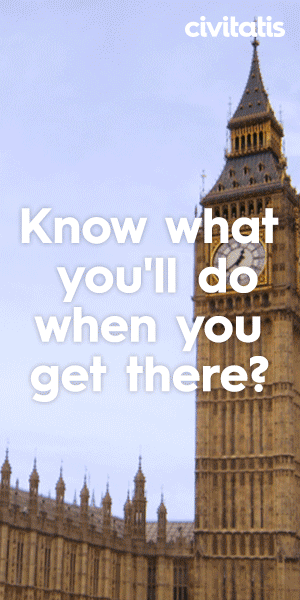The Abbasi Hotel in Isfahan was the hotel we stayed in during our time in Isfahan. Here’s some of the history of the Hotel. And why visitors to Isfahan should choose the Abbasi Hotel.
Review of the Abbasi Hotel in Isfahan Iran
Abbasi Hotel
The Abbasi Hotel (هتل عباسی) in Isfahan is one of the oldest and most centrally located hotels in the city. It was built around 1700 during the Safavid period by Soltan Hoseyn as a Caravanserai.
Caravanserai were roadside inns located along the Silk Road. With the Safavid empire under Shah Abbas I relocating the capital of Persia to Isfahan it became a major stop along the Silk Road. And caravanserai were an important part of the Silk Road where travellers could secure their precious cargo and rest overnight.
In Isfahan the former ‘Mothers Inn caravanserai’ is now named the Abbasi Hotel. And it has all of the modern conveniences one would expect. It’s a short 10 to 15 minute walk to Naghsh-e Jahan Square and the market areas that have existed since Safavid times.
The caravanserai was renovated and renamed the Abbasi Hotel in the 1960’s. It’s worth noting that the movie And Then There Were None was filmed in the Abbasi Hotel in 1974.
Abbasi Hotel Lobby
After a 40 minute cab ride from the Isfahan airport, the lobby will be your first experience of the hotel. When we visited a day or two before Christmas the Abbasi Hotel had a sequence of Happy Birthday signs up (see picture below).
As soon as our cab pulled up the doormen were immediately on scene. Collecting up our luggage and carrying it into the lobby. Check-in was a breeze and the staff just needed to photocopy our passports and we were off to our rooms. Again the doormen collected up our luggage and wheeled it to our rooms.



Abbasi Hotel Courtyard
Once we’d visited our rooms and put away our luggage it was time to explore the hotel beginning with the courtyard. The courtyard of the Abbasi Hotel was like a miniature Naghsh-e Jahan Square.
The courtyard looks just like the original drawings of the caravanserai on the Abbasi Hotel website. And it was my favourite part of the hotel overall. Day or night the courtyard was a great place to get some fresh air, relax and have a cup of Persian tea or coffee.
At the rear of the courtyard there’s a cafe and restaurant. We spent our evenings here enjoying the Persian food and watching the staff perform. At what seemed like random intervals performers would dance, sing or engage in some form of traditional smoking ceremony.
The staff will pass around a silver tray of burning Esfand seeds that make a popping sound and produce an aromatic smoke. The smoke is circled around the building and around the heads of its guests. And it’s said to chase away curses, evil eyes and other bad juju.
For those guests that drop money into the plate that is also on the silver tray a traditional blessing or prayer is said. It’s quite entertaining to watch even for those of us who aren’t superstitious.





Abbasi Hotel Rooms
The majority of the rooms are quite spartan. Yet despite their colour schemes and decor the Abbasi Hotel’s rooms are quite modern. And all the rooms I saw at the hotel were large.
Most hotel rooms looked like the one I stayed in pictured below. Hotel staff kept the rooms and the hotel meticulously clean. And the staff would periodically check in on guests to see if they needed anything.
Each room had a balcony. Our group had one room facing into the courtyard and another facing out to the street.

Abbasi Hotel Views
From the room pictured above that was on the outward facing side of the building above the lobby, the balcony had a fantastic view over Isfahan to Mount Soffeh (Kuh-e Soffeh). I loved sitting on the balcony overlooking Isfahan with a glass of Persian tea.


Day or night, the outward facing balconies of the Abbasi Hotel really do have amazing views. Watching the sun fall below Mount Soffeh (Kuh-e Soffeh) from the balcony is something I’d advise anyone staying at the Abbasi Hotel to do.
At night the city of Isfahan really comes alive. Isfahan is awash with colourful lights in the evening. And after watching the sun set behind Mount Soffeh we walked 15 minutes to Naghsh-e Jahan Square. Naghsh-e Jahan Square and it’s Ali Qapu Palace and Shah Mosque should be observed at night.
A 10 minute walk in the other direction from the hotel is the Zayandeh River. Where one can observe the Si-o-se-pol bridge. The Si-o-se-pol bridge lights up brilliantly at night and from the Abbasi Hotel to the Si-o-se-pol bridge there are many wonderful tea houses where we picked up some Persian teas and coffees while walking to the bridge.



Abbasi Hotel | هتل عباسی | Conclusions
We loved our stay at the Abbasi Hotel. Isfahan was a beautiful city with a rich history and the Abbasi Hotel was the perfect combination of historical site conveniently located in the city and conventional hotel. From the Abbasi it was so easy to just go out walking and exploring Isfahan.
Isfahan was one location in Iran I would definitely choose to see again. And I likely will one day as there was far more than we could see in the single trip. I doubt anyone could explore all the historical sites in Isfahan in anything less than a month.
Isfahan was such a laid back city it felt wrong rushing from one site to another without stopping to drink tea and just watch the world go by. In any of the tea houses around Naghsh-e Jahan Square or along the Zayandeh River you could just sit, have a tea or coffee and watch life go by. Isfahan is a city I’ll try my best to visit again and would again stay in the Abbasi Hotel.
Liked this article? Subscribe to the blog below and check out our other travel articles on Iran.





